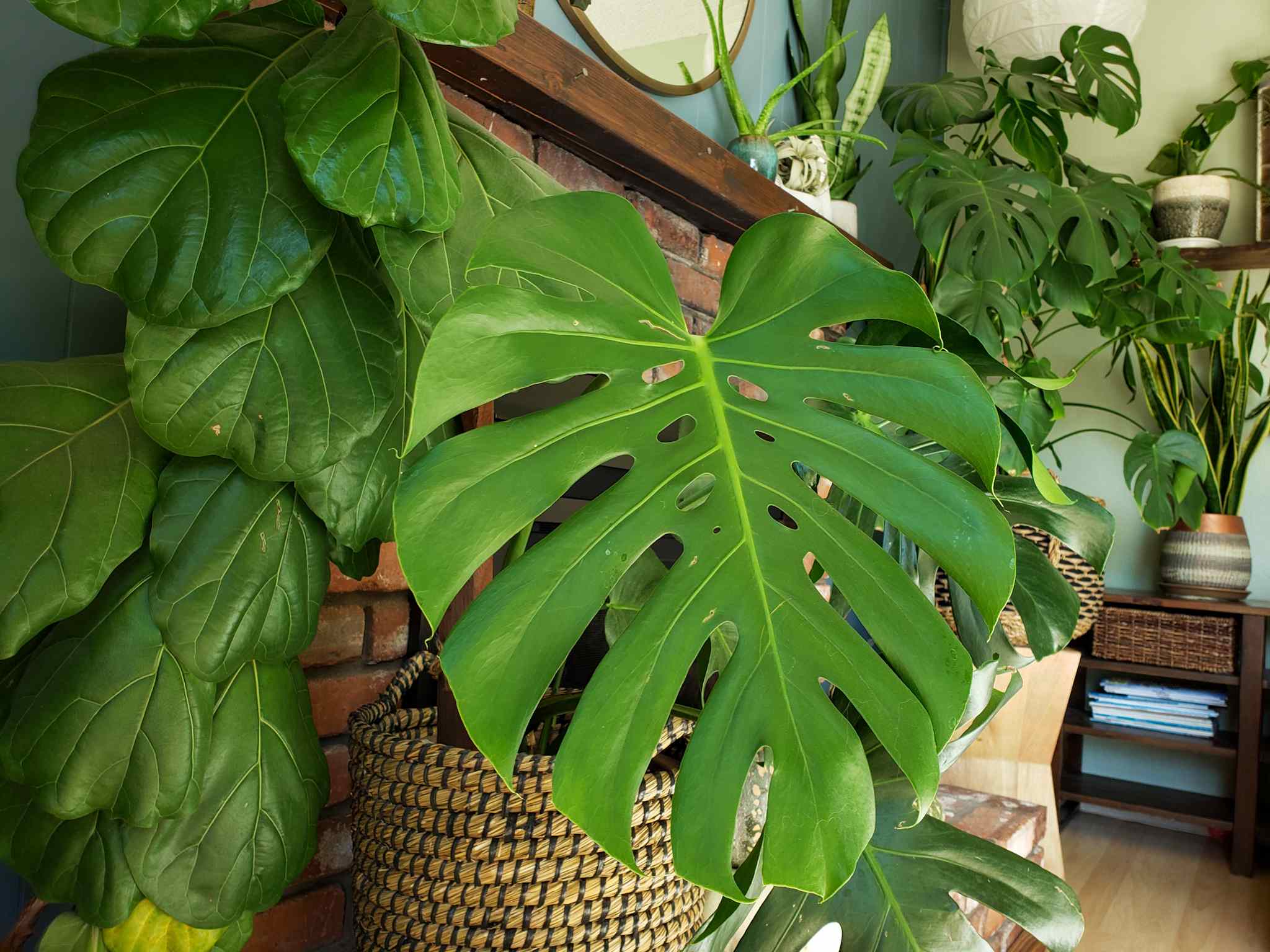Control Gnats In Plants
Gnats are very small files that can be a nuisance to gardeners trying to grow healthy plants. There are many species of gnats, but the one type that is problematic for gardeners in planting beds and potted plants is fungus gnats. If your plants have been eaten away by tiny maggots, then fungus gnats are your culprits.
In this article, I will go over how to identify fungus gnats, how to get rid of them, and tips that can help you avoid future infestations. Keep reading to learn more.
What are gnats?
The most common species found in homes are fungus gnats. They are tiny, black insects with long legs and wings that lack scales. The adults do not eat anything because they do not have mouths, but their maggots can be very destructive to plants.

Image Credit: http://getgreenbewell.com
Adult gnats lay eggs on soil surfaces or the base of houseplants where fungi grow. Fungus gnat larvae feed off of fungus growing in your plant’s soil. A few types of fungus gnats are Bradysia impatiens, Sciara, Mycetophila fungorum, and Bolitiphila.
Fungus gnats can infest both outdoor and indoor plants, and they like to lay eggs in high-nitrogen soil. If your houseplants are suffering from fungus gnat infestation, you’ll see damage on the leaves in the form of tiny brown or black spots that look like dirt stains. The leaves will start dying off after turning black. In severe cases, small maggots may be visible on plant roots or bases where adults lay eggs.
In addition to being a nuisance pest for planting beds and potted plants, fungus gnats pose risks to human health as well. Their larvae do not only feed off of dead organic material but also excrete it as a waste matter which can contaminate indoor air.
If you have fungus gnats in your home, you may notice a strong irritating sweet smell that smells similar to mold or mildew. If the infestation is bad enough you might start sneezing and seeing more of them flying around near windowsills.
How do you know if your potted plants have these pests?
1) If mushrooms are growing out of the potting mix it is a tell-tale sign that fungus gnats are present in the soil.
2) If you spot small insects flitting about your plants, you also could have an infestation. The larvae of the gnats love to eat root hairs and plant stems. You can tell if your plant has maggots by lifting the potting mix to take a look.
3) Fungus gnat larvae are typically creamy-white with shiny blackheads. They also will leave tiny tracks on the soil surface that resemble little snail paths from all their digging around near plant roots.
4) If fungus is growing out of the soil where it should not be, then you also could have a gnat problem.
5) If you have moldy, spotted leaves or dying plants then fungus gnats could be responsible for the damage.
6) Finally, if you notice signs of root rot, it could be a symptom of an infestation from fungus gnats and other pests.
How to get rid of gnats in plants
The first thing I would recommend doing is removing any potted plants that are infected with fungus gnats from the area. If possible put them away from your healthy plants to avoid spreading the problem by way of spores during watering cycles. If you cannot seem to get rid of them, then I would recommend removing the infected plant and soil altogether to kill any larvae that might be present.
If your indoor plants are not infested, you can prevent fungus gnats from ever getting into your home by placing sticky yellow traps around baseboards where they tend to fly. If the traps do not work, try using a natural pesticide made from orange peel oil.
How to choose the right pesticide for killing fungus gnats
There are so many pesticides available in stores that it is difficult for anyone without experience or education to know which ones will work best for fungus gnat control. You should avoid unnecessary exposure by way of inhalation as much as possible. This means steering clear of pesticides that use chemicals such as pyrethrin and rotenone. Natural pesticides made from plant extracts or oils can be effective in controlling fungus gnats while being safer for your health and the environment.
Another option is to use a sticky trap that will catch the flying adults before they can lay eggs and reproduce. The traps can be purchased online or at your local nursery.
Fungus gnat larvae grow in moist soil, so drying up the top layer of soil where adults land to lay eggs is another way to kill this invasive species. Some natural pesticides work by way of suffocation because fungus gnats must have a moist environment for survival. Certain products on the market claim to eliminate fungus gnat infestations within 48 hours by dehydrating all stages of their life cycle.
In my opinion, it would be best to try using a biological pesticide as your first line of defense against these annoying pests because they are non-toxic and break down quickly into safe compounds without leaving residue. Biological pesticides are fungi that produce enzymes that paralyze the insect and then digest them over time once consumed. Using a biological pesticide can be especially helpful when you have fungus gnats in your houseplants because natural predators like nematodes will actively seek out larvae in the soil where they can do their job with no chemicals involved at all.
How to make a homemade pesticide
What you’ll need: one cinnamon stick, two cups of water, and one tablespoon of organic dishwashing soap.
First, put the cinnamon stick in a pot filled with water and bring it to a boil until it reduces by half. Then take out your cinnamon stick and add the dishwashing soap and stir thoroughly.
Pour this mixture into a spray bottle when it has cooled off completely, then when it’s time for pests to appear just spray them away. One thing to keep in mind when making pesticides such as these is that they only last about three days so if you have fungus gnats reoccurring you will want to mix up another batch or switch chemicals to be more effective. It is best to experiment with what you have at home and formulate some sort of natural pesticide that works well for the type of pest you are looking to eliminate.
Tips on how to prevent fungus gnats in plants
Going forward, if you’re having issues with fungus gnats in your plants, be very careful about overwatering. Overwatering will promote root rot which is a major cause of fungus gnat infestations.
If your plants are already being attacked by these pests, carefully look them over for eggs or larvae before bringing them back indoors. The safest way to kill any potential eggs would be using insecticidal soap so they do not reproduce and continue their cycle of eating away at your plants.
Afterward, you want to repot with new soil so that the fungus gnat larvae cannot continue their cycle in the moist environment they love.
Any sick-looking plants should be taken down immediately so they do not infect germinating seeds or nearby vegetation. Getting rid of fungus gnats is essential for plant health as well as your hygiene because if these pests manage to reproduce inside your home it can lead to a breeding ground for pestilence and disease. It’s best to keep an eye on all of your beloved houseplants – this should make gnats in plans become a distant memory through proper irrigation methods.
Control Gnats In Plants – FAQ
How do I get rid of voles in my garden?
Gnats are not the only pests to want to get rid of. Getting rid of voles in your garden can be tough and there are several things that you will need to do for this to happen. First of all, when looking for ways to get rid of voles, you will want to figure out what is attracting these pesky critters into your yard.
The first thing that you should check is if they are coming into your yard because it smells like food, water, or shelter. If this is the case then the easiest way to get rid of them would be by getting rid of whatever is attracting them.
Make sure that you also check for burrows in your garden – if they are already in there it will be much harder to get rid of voles. Regardless of how you plan on getting rid of these critters from your yard, another good idea would be to look into purchasing traps and poisons that can help with the process.

Image Credit: http://homesteadandchill.com
How do I prune tomato plants?
Pruning tomato plants is something that you will want to do to get the most out of your yields. Tomato plants tend to produce at multiple places along the stem, and you must wait until these flower clusters are just about to open before you prune them off. Doing this ensures that your plant will be more productive than ever before while spreading its energy between fewer branches.
Final thoughts on controlling gnats in plants
In conclusion, pests are everywhere. It is important to get them before they get you, especially if your crops are involved. You need to ensure that no pest can get into your garden and destroy all of your hard work. This includes insects, fungi, bacteria, nematodes, and anything else that would be considered a pathogen.
It’s also important to note that pesticides aren’t always the answer. Sometimes herbs or essential oils will do the trick just fine. Nature has provided us with countless different ways in which we can protect our crops from pests without having to rely on unnatural chemicals. Use every tool at your disposal—and try to stay balanced when deciding whether or not pesticides should be used in any specific situation.
The post Control Gnats In Plants appeared first on Kitchen Infinity.
Did you miss our previous article…
https://public-kitchen.org/?p=334


